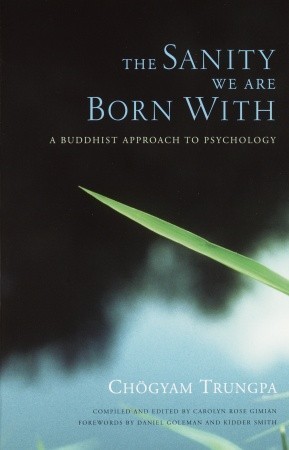
More and more mental health professionals are discovering the rich tradition of Buddhist psychology and integrating its insights into their work with clients. Buddhist tradition teaches that all of us are born with what Chögyam Trungpa terms "basic sanity," or inherent goodness, health, and clear perception. Helping ourselves and others to connect with this intrinsic ground of sanity and health is the subject of this collection of teachings, which the author gave to Western psychologists, psychotherapists, and students of Buddhist meditation over a number of years. The Sanity We Are Born With describes how anyone can strengthen their mental health, and it also addresses the specific problems and needs of people in profound psychological distress. Additionally, the author speaks to the concerns of psychotherapists and any health care professionals who work with their patients' states of mind. The collection includes teachings on: • Buddhist concepts of mind, ego, and intelligence, and how these ideas can be employed in working on oneself and with others • meditation as a way of training the mind and cultivating mindfulness • nurturing our intrinsic health and basic sanity • guidance for psychotherapists and health professionals
Author

Vidyadhara Chögyam Trungpa Rinpoche (Tibetan: ཆོས་ རྒྱམ་ དྲུང་པ་ Wylie: Chos rgyam Drung pa; also known as Dorje Dradul of Mukpo, Surmang Trungpa, after his monastery, or Chökyi Gyatso, of which Chögyam is an abbreviation) was a Buddhist meditation master, scholar, teacher, poet, and artist. He was the 11th descendent in the line of Trungpa tulkus of the Kagyü school of Tibetan Buddhism. He was also trained in the Nyingma tradition, the oldest of the four schools, and was an adherent of the rimay or "non-sectarian" movement within Tibetan Buddhism, which aspired to bring together and make available all the valuable teachings of the different schools, free of sectarian rivalry. Trungpa was a significant figure in the dissemination of Tibetan Buddhism to the West, founding Naropa University and establishing the Shambhala Training method, a presentation of the Buddhadharma largely devoid of ethnic trappings. In 1963, he moved to England to study comparative religion, philosophy, and fine arts at Oxford University. During this time, he also studied Japanese flower arranging and received an instructors degree from the Sogetsu school of ikebana. In 1967, he moved to Scotland, where he founded the Samye Ling meditation centre. Shortly thereafter, a variety of experiences—including a car accident that left him partially paralyzed on the left side of his body—led him to give up his monastic vows and work as a lay teacher. In 1969, he published Meditation in Action , the first of fourteen books on the spiritual path published during his lifetime. The following year he married Diana Pybus and moved to the United States, where he established his first North American meditation centre, Tail of the Tiger (now known as Karmê-Chöling) in Barnet, Vermont. In 1986, he moved to Nova Scotia, Canada, where hundreds of his students had settled. That Autumn, after years of heavy alcohol use, he had a cardiac arrest, and he died of heart failure the following Spring. His legacy is carried on by his son, Sakyong Mipham Rinpoche, under the banner of Shambhala International and the Nalanda Translation Committee.